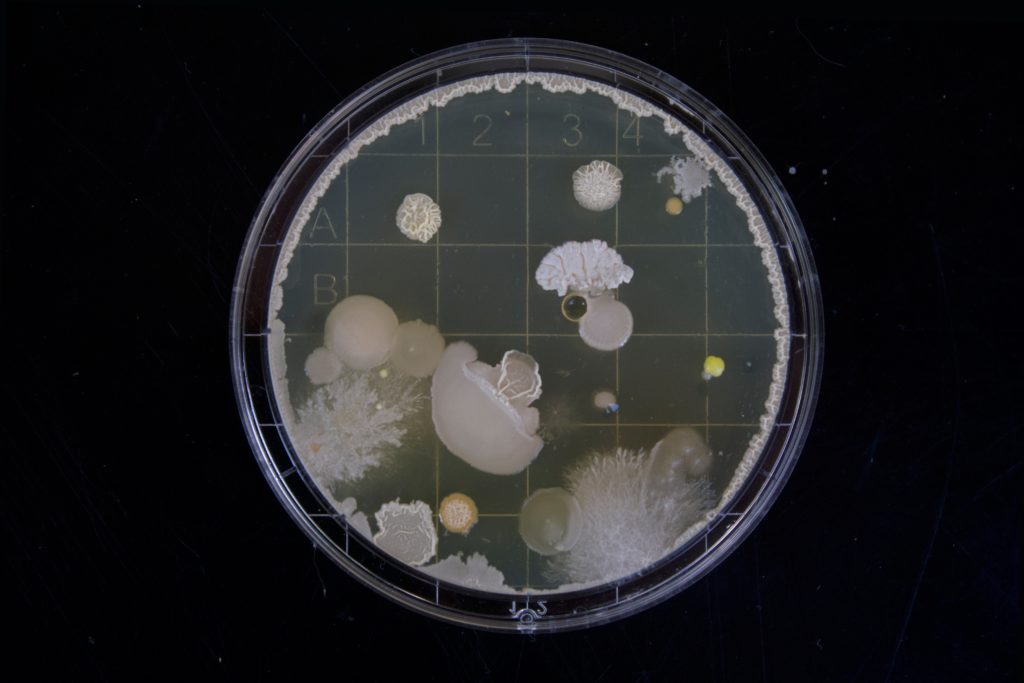
It may be the handiest beauty tool for a flawless look - but you might want to know what is living on your beauty blender so that you can avoid any health mishaps...
Dr Regina Kelly, Beaut's new Science Editor, is a Science Educator and a Dean’s Postdoctoral Fellow in STEM Education at EPI*STEM, the National Centre of STEM Education, School of Education, Faculty of Education and Health Sciences, University of Limerick.
Unexpected acne breakout? Strange smell coming from your beauty blender? These are signs that there is bacteria build up on your makeup applicator.
Bacteria are everywhere. We have about ten times more bacteria cells than human cells in our body. Some bacteria on your skin are good and act as a defence against bad bacteria. Wiping a microbe-infested sponge over your skin, however, causes an excess of bacteria that can lead to breakouts.
To understand the problem it is important to know the conditions that promote bacteria growth. Samantha Prior, Associate Teacher, Department of Biological Sciences at the University of Limerick explains why beauty blenders are the perfect breeding ground for microbes.
‘Every time you use your beauty blender, you transfer micro-organisms onto your face. Your beauty blender, as well as the makeup products you use become a breeding ground for all your dead skin cells, dirt, and bacteria. You may not notice them, but your skin will show the effects of these bacteria, resulting in blemishes and skin infections’.
The conditions needed for bacteria to grow on your beauty blender are:
Moisture
Bacteria love moist places and need to multiply and survive. Moist areas are particularly prone to bacterial growth, so by leaving your beauty blenders in the bathroom or by not completely drying your beauty blenders after you wash them can cause bacteria to grow.
Advertised
Warmth
Most disease-causing bacteria love warm temperatures, especially anything from room temperature to body temperature (37°C) making the human body an ideal environment for bacteria to grow. Also throwing your beauty blenders straight into a drawer or a packed makeup bag after you use them can also create a warm moist environment for bacteria to thrive.
Food
Bacteria need nutrients to feed on and to grow, so your beauty blender covered with dead skin cells and makeup are the perfect bacteria buffet.
Time
Bacteria need time to grow and given the right environmental conditions (moisture, warmth, and nutrients), they are capable of doubling their numbers in just 20 minutes. Imagine how many bacteria are growing in drawers or makeup bags after a night out!
What tips can you follow to keep the microbes on your beauty blender at bay?
- Wash your beauty blender by rubbing on a bar of soap under warm running water. This will help to remove microbes.
- Wash often. The more regularly you wash your beauty blender the less time microbes will have to reproduce.
- Wash your hands and face before using your beauty blender. This will reduce contamination.
- Never share! Your face contains its own flora of microbes.
- Replace foundations. Foundations with a pump should last one to two years. Foundations in pots are more exposed to microbes, therefore you should replace them if they are older than six months.
(Here is a handy guide to washing your makeup brushes.)
Advertised
Do you have any science-based beauty questions? Let us know in the comments!




